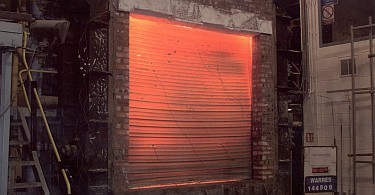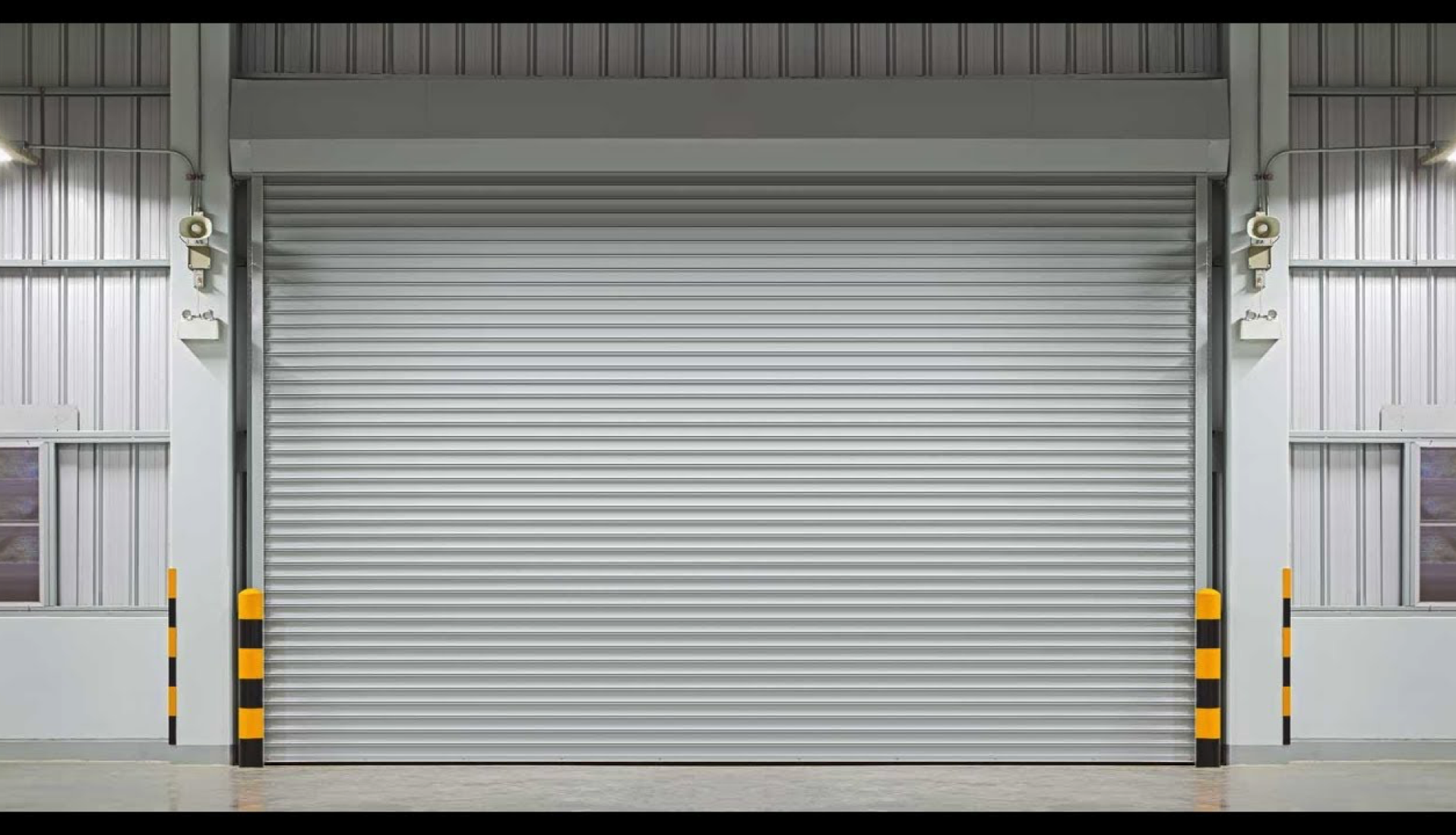
Fires in any home or business can be catastrophic, especially if the flames and smoke are able to spread throughout the building easily. One way to prevent fire from spreading between sections of a building, or between buildings that are close to each other, is to install fire shutters in key places.
Measures like this can create a fire-resistant barrier that keeps it at bay for as long as possible. Every minute is precious during an evacuation and while waiting for firefighters to arrive, so a fire shutter could be invaluable in saving lives and preserving at least part of the building and its contents.
Without fire shutters to cut off the spread of fire, you could be facing massive financial losses, even with insurance. That should be reason enough to install them wherever your building might need them – but is it a legal requirement to have fire shutters? And where are they supposed to be used?
This blog explains everything you need to know about when and where fire shutters are required.
Why are fire shutters needed?
Fire shutters are fire-resistant roller doors. Just like the roller shutters you’ll see on the outside of shops or garages, they’re made from metal and roll up above an opening when not in use. The difference is that fire shutters only drop closed if there’s a fire, to try to stop it from spreading.
Depending on the type of shutter and operating system you choose, and how it connects to your existing fire detection system, you can programme fire shutters to close automatically with specific triggers. For example, if the fire alarm goes off, the shutter can drop closed immediately.
Or, to allow people to use it as an escape route for as long as possible, the door can be programmed to stay half-open until a sensor detects heat nearby, at which point it will drop fully closed and seal the gap before the fire reaches it. This barrier can help to save lives and business assets.
These toughened roller shutters act as a fire break between compartments of a building to limit the damage to a smaller area. They work as part of a well-designed fire safety strategy, combined with measures like smoke detectors, alarms, fire extinguishers, and building evacuation plans.
Fire shutters can be designed to withstand heat and smoke for up to several hours, or a minimum of 30 minutes according to British and European standards. In many cases, this will be enough time for emergency services to arrive at the scene and get the fire under control.
Where can fire shutters be used?
If you regularly handle or store flammable materials, there’ll be a higher risk of fire. This is where fire prevention measures are essential, especially in large buildings or clusters of buildings where flames can easily jump from one section to another and continue spreading.
Here are some examples of places throughout the industrial, commercial, and public sectors that use fire shutters as part of their safeguarding and security measures:
- Warehouses and factories
- Power plants and chemical plants
- Shopping centres and retail stores
- Schools, colleges, and university buildings
- Canteens, cafeterias, and restaurants
- Hospitals and scientific laboratories
Any access point between two parts of a building, including between the inside and outdoors, can be fitted with a fire shutter. They’re usually found above internal and external doorways and windows, and particularly at the entrance/exit points of kitchens, storerooms, and loading bays.
If the shutter is fitted over a doorway or other ‘means of escape’, it must be the type with an anti-drop brake that stays open until triggered by a sensor detecting an excessive temperature level. This is to prevent injuries from the shutter closing while people are trying to get out.
Of course, a fire shutter is only as strong a fire barrier as the surroundings it’s fitted to. Fire shutters can only be fitted to masonry or structural steel that has the same minimum level of fire resistance as the shutters, preventing the fire from spreading around it if the fittings are weak.
When are fire shutters required by law?
In all non-domestic and commercial properties, including blocks of flats and multi-apartment houses, fire doors are a legal requirement. When it comes to fire shutters, which cover larger openings than standard door sizes, these aren’t always mandatory – it depends on the property, how it’s used, and the layout of the space.
You’ll need to carry out a full risk assessment of your premises to identify fire risks and take steps to counter them, with regular Building Control safety inspections to make sure you’re maintaining legal compliance. Your local Building Control Officer might find your use of fire doors and other measures to be adequate without shutters.
When it comes to Building Regulations for fire shutters, you’ll find ‘rolling shutters in compartment walls’ under Approved Document B (Volume 2: Buildings other than dwellings). These shutters are classed as fire doorsets, and must be tested and certified to the standards set by:
- BS EN 1634 (-1 -2 -3) – ‘Fire resistance and smoke control tests for door and shutter assemblies’
- BS 476 (-31.1) – ‘Fire tests on building materials and structures’
- BS EN 13501 (-2) – ‘Fire classification of construction products and building elements’
This includes maintaining heat integrity for at least 30 minutes, with an equal smoke resistance period for most cases. In areas such as enclosed corridors and stairwells that aren’t part of a protected escape route, the fire rating can be as low as 20 minutes.
Further guidance on standards for metal doors can be found in the Code of Practice for Fire Resisting Metal Doorsets from the Door and Shutter Manufacturers’ Association (DSMA).
Where to get fire shutters
It’s easy enough to do a quick search for fire shutters and click on the first links that come up, but that doesn’t mean they’re trusted providers with the necessary experience to supply a high-quality product that complies with the relevant laws.
It’s best to look for a reliable supplier of all kinds of roller shutters, who’s been in the industry for long enough to know exactly what they’re doing and build a reputation for excellent service. For example, if your building is in the Bolton area, you could go to Roller Shutter Services for roller shutters in Bolton – including fire shutters and fire curtains.
The best part about ordering your fire shutters from an established supplier is that it’s also possible to set up ongoing fire shutter maintenance services, helping you to stay on top of the legal requirements for fire shutter testing and upkeep.
